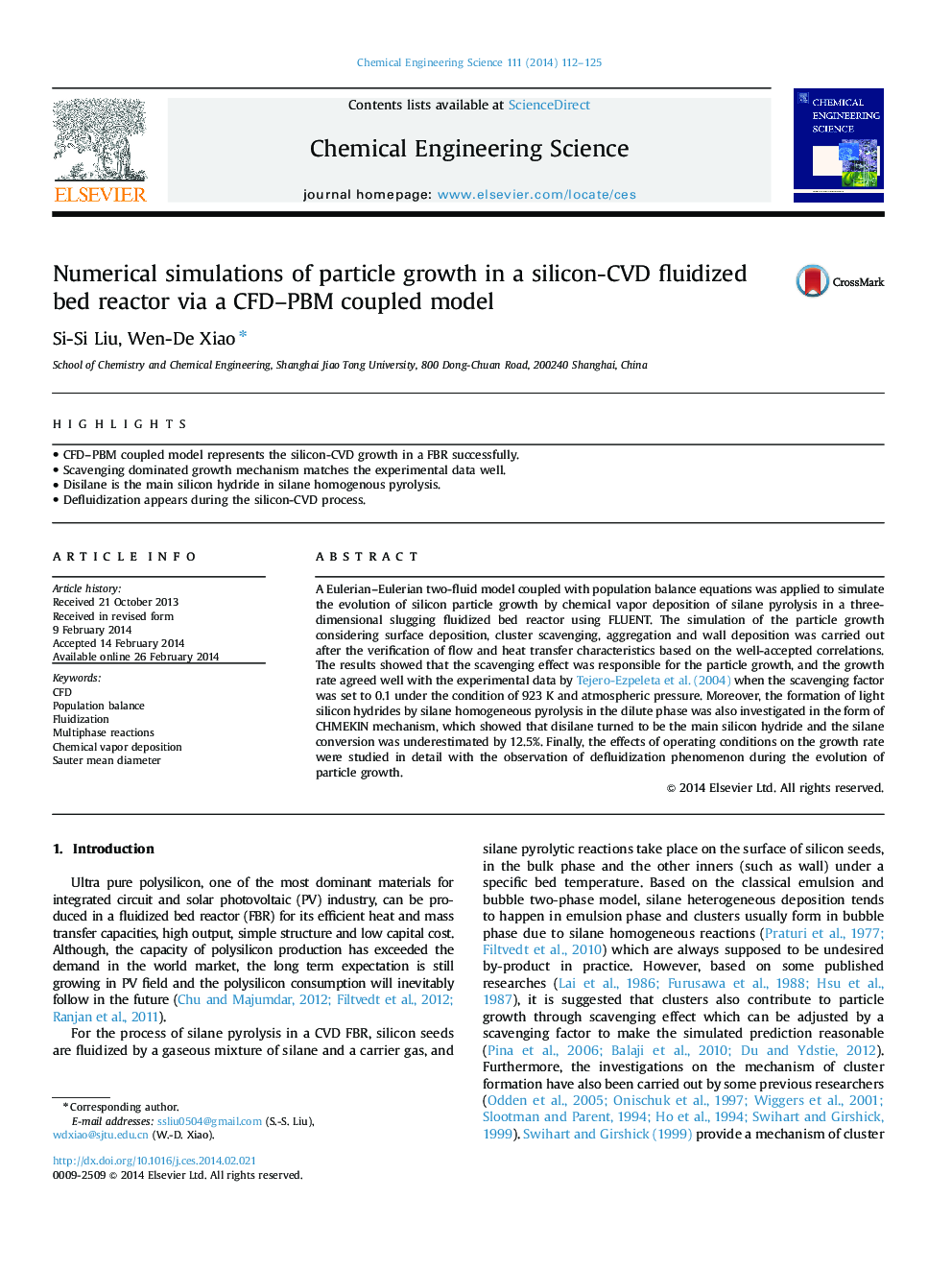| Article ID | Journal | Published Year | Pages | File Type |
|---|---|---|---|---|
| 6591356 | Chemical Engineering Science | 2014 | 14 Pages |
Abstract
A Eulerian-Eulerian two-fluid model coupled with population balance equations was applied to simulate the evolution of silicon particle growth by chemical vapor deposition of silane pyrolysis in a three-dimensional slugging fluidized bed reactor using FLUENT. The simulation of the particle growth considering surface deposition, cluster scavenging, aggregation and wall deposition was carried out after the verification of flow and heat transfer characteristics based on the well-accepted correlations. The results showed that the scavenging effect was responsible for the particle growth, and the growth rate agreed well with the experimental data by Tejero-Ezpeleta et al. (2004) when the scavenging factor was set to 0.1 under the condition of 923Â K and atmospheric pressure. Moreover, the formation of light silicon hydrides by silane homogeneous pyrolysis in the dilute phase was also investigated in the form of CHMEKIN mechanism, which showed that disilane turned to be the main silicon hydride and the silane conversion was underestimated by 12.5%. Finally, the effects of operating conditions on the growth rate were studied in detail with the observation of defluidization phenomenon during the evolution of particle growth.
Keywords
Related Topics
Physical Sciences and Engineering
Chemical Engineering
Chemical Engineering (General)
Authors
Si-Si Liu, Wen-De Xiao,
